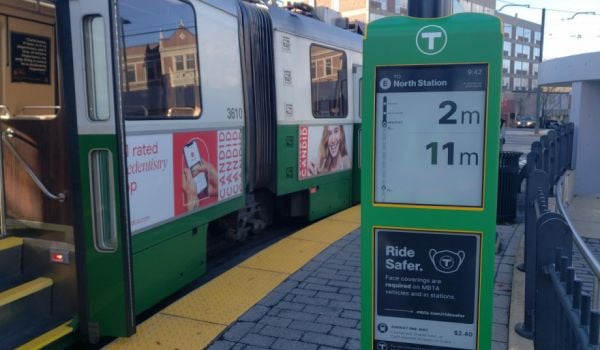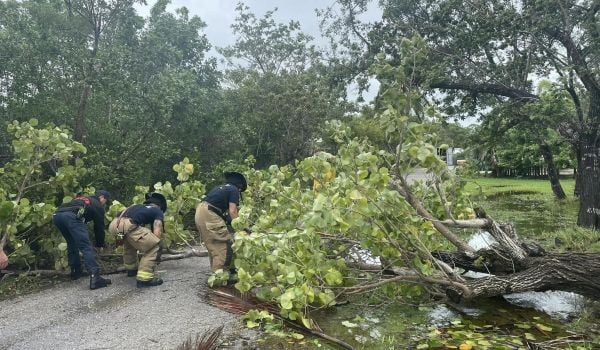When a plane struck the North Tower of the World Trade Center on September 11, 2001, radio and cell service in lower Manhattan went down.
“The major cell towers were on top of the building, so there was very, very little signal available to [first] responders,” recalls Joseph Canova, speaking in a taped interview with the New York Transit Museum.
Canova, an assistant chief telecommunications officer with the MTA, explains that the attack also damaged Verizon’s underground cables, meaning that most of the land lines in the area went down too. So his department stepped in.
“We have eight full-blown PBX telephone switches around the city and thousands of miles of our own cabling underground, which serves the subway,” he says. “We were able to give the office of emergency management, FEMA, fire department, police department, phone service from below ground, for them to be able to operate.”
His interview is part of the Transit Museum’s new exhibit, “Bringing Back the City: Mass Transit Responds to Crisis.” The show, which opens September 30th, combines oral histories, photos and video to document the aftermath of September 11th, Hurricane Sandy and other citywide disasters from the perspective of transit workers who found themselves on the front lines.
“It really evolved out of Hurricane Sandy,” says Josh Feinberg, the exhibit’s curator. “Museum staff was hearing about all the things that MTA rail and transit staff did to prepare the system and then to get it back up and running.”
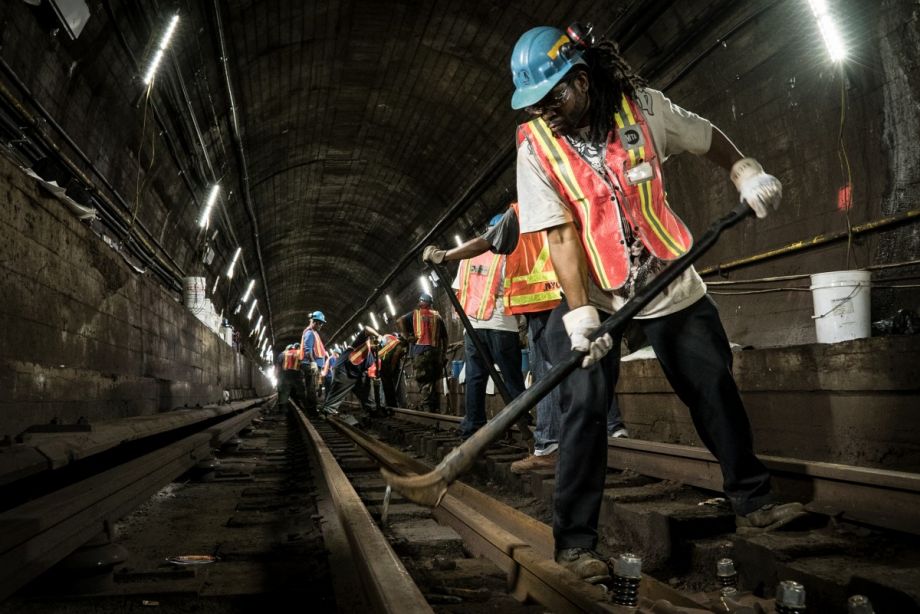
Workers in the Greenpoint subway tunnel after Superstorm Sandy (Credit: Metropolitan Transit Authority/J.P. Chan)
The result is a look at disaster relief you don’t often see — less dramatic than 24-hour cable’s looped footage, but still a fascinating exploration of the nuts, bolts and PBX switches that contribute, behind the scenes, to emergency response.
“When the transit system is shut down, when it’s not functioning, and then it comes back, that’s really this kind of signal to the city that we’re functioning as normal — that we can bounce back,” Feinberg says.
By shining a light on the days before that signal, the exhibit highlights just how vast New York City’s transit infrastructure is, and how many people contribute to its daily operation. The internal phone system is one example. According to Feinberg, the transit department also donated portable generators and heavy equipment to help with 9/11 recovery efforts.
“Transit systems have so many pieces, so you have people skilled in telecommunications, electricity, engineering, ironwork,” he says, adding that workers are often brought in to repurpose those skills.
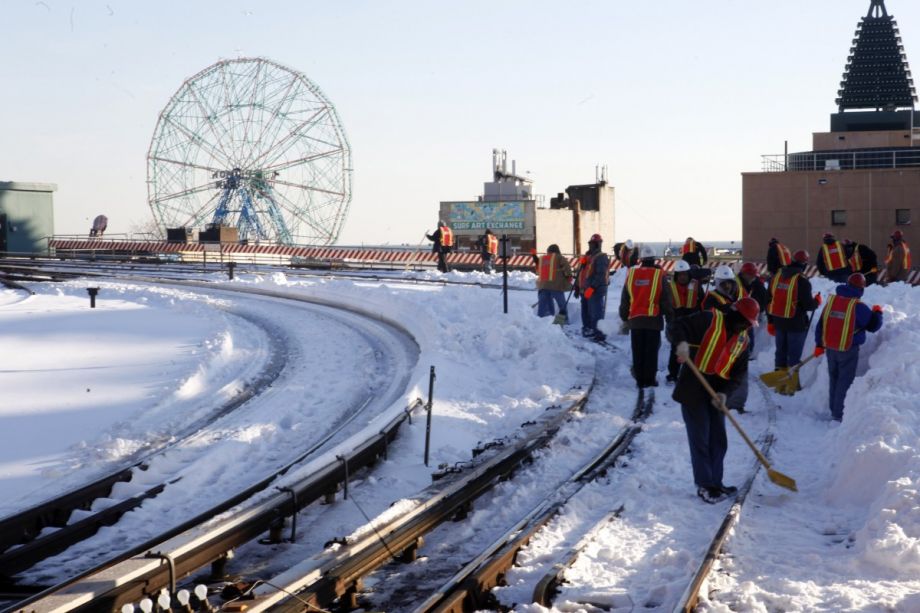
Transit workers clear tracks near Coney Island after a December 2010 blizzard (AP Photo/Mary Altaffer)
As a result, many of those workers have witnessed New York’s defining disasters up-close, coming face to face with the flooding and structural damage that’s cleaned up and repaired by the time most of us would venture back to the tunnels and tracks. They get an unedited glimpse of what nature — or, in the case of 9/11, humans — can do. Photos show underground tracks devastated by flooding, impassable snow from the December 2010 blizzard, and the scorched, rubble-strewn entrance of the N/R subway station after the World Trade Center attacks. Connie Crawford, a former chief engineer with the MTA, provides eerie details of what the tunnels in Manhattan looked like after those attacks.
“You’d see steel speared down through the roof of the tunnel. You saw columns that took the impact damage and the column sort of snaked. I’ve never seen steel do the things that this steel was doing,” she says in another oral history recorded for the exhibit.
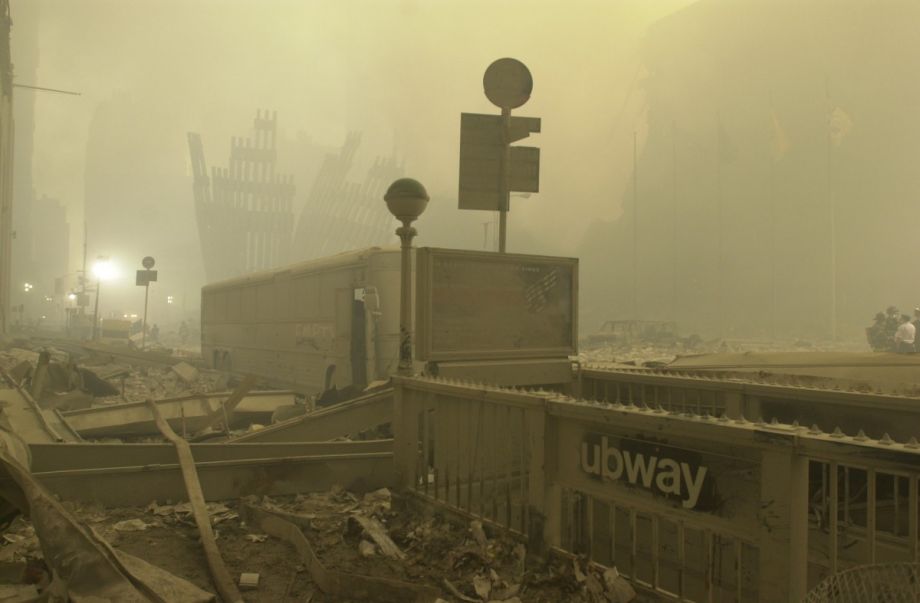
The Cortlandt Street N/R subway station after the World Trade Center attack in 2001 (AP Photo/Mark Lennihan)
The show’s candor, walking viewers through those early moments before cleanup and repair, also serves as an urgent reminder of what’s to come. 9/11 wasn’t a natural disaster, but Sandy’s severity was very much in keeping with climatologists’ predictions about hurricanes and warming seas. And as icebergs melt and oceans rise, New York’s subterranean transportation system could be particularly compromised.
“We know that the transit system is vulnerable,” Feinberg says. “It’s underground, close to the water and close to flooding. The exhibit highlights that challenge and looks at some of the approaches being taken to prepare.”
Innovations for future resilience will need to answer a central question, he adds: How do you let people and fresh air in, but keep water out? Possibilities include pliable barriers, vent-closing devices and pumps.
“We know that the climate is changing,” he says. “The train systems are going to have to deal with that.”
The Works is made possible with the support of the Surdna Foundation.

Rachel Dovey is an award-winning freelance writer and former USC Annenberg fellow living at the northern tip of California’s Bay Area. She writes about infrastructure, water and climate change and has been published by Bust, Wired, Paste, SF Weekly, the East Bay Express and the North Bay Bohemian
Follow Rachel .(JavaScript must be enabled to view this email address)









